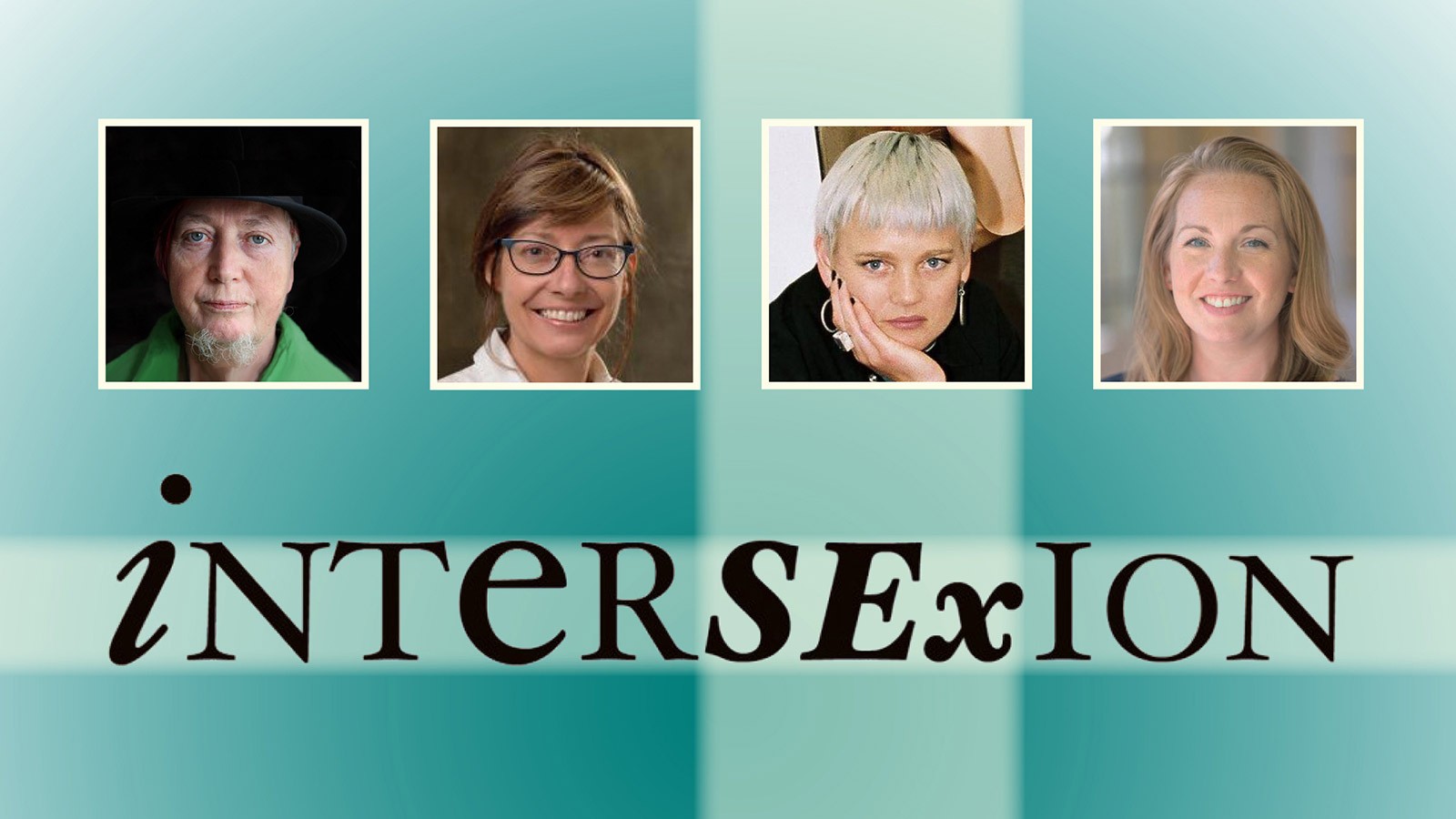Gender Revelations: USU Hosts March 18 Panel Discussion on Intersex Documentary
By Mary-Ann Muffoletto |
USU's Intersections hosts a March 18 Zoom panel discussion of the film 'Intersexion,’ featuring, from left, film presenter Mani Mitchell, bioethicist and journalist Alice Dreger; activist Jelly O’Shea and USU neuroendocrinologist Sara Freeman.
Trendy gender-reveal parties or excited exclamations of “It’s a girl (or boy)!” in the delivery room typically herald the arrival of a new baby. But what happens when the child’s sex isn’t readily obvious?
Globally, an estimated one in 2,000 children are born each year with noticeably atypical genitalia, resulting from a range of chromosomal characteristics or varied congenital conditions. Once known as hermaphrodites, medical professionals and human rights activists have sought new nomenclature to better describe people who do not fit typical binary notions of male or female. The term “intersex” was adopted by the United Nations Office of the High Commissioner for Human Rights, the World Health Organization, along with many professional medical societies, in the early 21st century.
Utah State University’s Center for Intersectional Gender Studies and Research hosts a panel discussion Thursday, March 18, to explore this phenomenon, along with stories shared by intersex people, in the landmark 2012 documentary, Intersexion. The film is available for free viewing on YouTube.
All are welcome to the discussion, presented on Zoom at 4 p.m. MST, featuring Mani Mitchell, the film’s researcher and presenter; bioethicist and journalist Alice Dreger; intersex activist Jelly O’Shea and USU neuroendocrinologist Sara Freeman.
“The documentary ‘Intersexion’ provides a window into the lived experiences of people who don’t fit the binary model of a male and female world,´ says Freeman, assistant professor in USU’s Department of Biology and panel moderator. “It offers individuals’ stories of how they’ve navigated childhood, adolescence and adulthood, and provides hope for a more inclusive future. This is an extraordinary opportunity for the USU community to hear directly from a community often mistreated and misunderstood.”
Intersexion, written and directed by filmmaker Grant LaHood, features interviews with intersex people in the United States, Ireland, Germany, South Africa and Australia. Some had early surgical interventions; some did not. The film follows Mitchell, who is known as New Zealand’s first “out” intersex individual and appears on the March 18 USU panel, as they visits the film’s participants and talks with them about their lives, their struggles and their relationships.
“An aim of the film is to ‘de-mystify’ intersex and to look beyond the shame and secrecy that tragically defines so many intersex births,” Freeman says.
Building on USU’s long and successful history of women and gender programs, the Center for Intersectional Gender Studies and Research, also known as “Intersections,” supports interdisciplinary learning and research across all of the university’s campuses to provide outstanding instruction and to foster a climate promoting equality and inclusion for all students, faculty and staff.
WRITER
Mary-Ann Muffoletto
Public Relations Specialist
College of Science
435-797-3517
maryann.muffoletto@usu.edu
CONTACT
Sara Freeman
Assistant Professor
Department of Biology
435-797-0670
sara.freeman@usu.edu
Comments and questions regarding this article may be directed to the contact person listed on this page.







